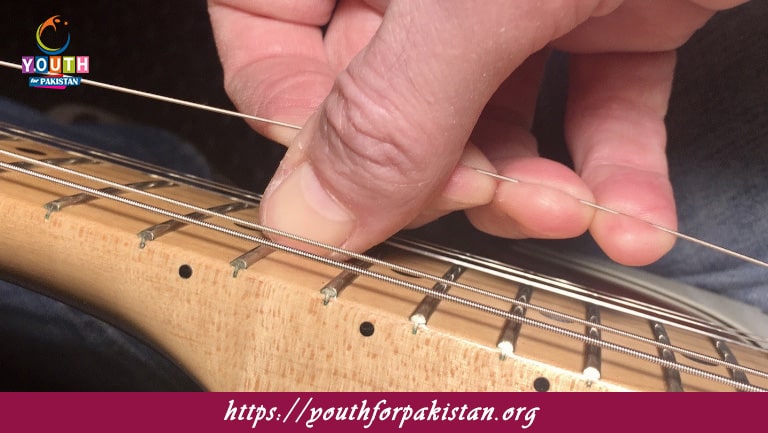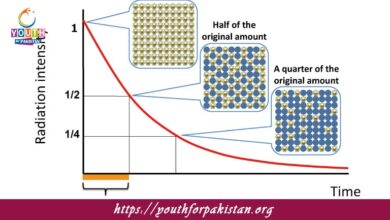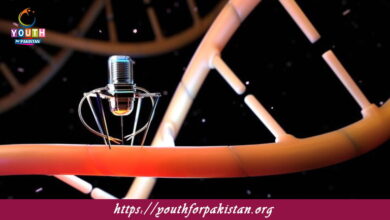Stationary Waves In A Stretched String MDCAT MCQs

Welcome to the Stationary Waves In A Stretched String MDCAT MCQs with Answers. In this post, we have shared Stationary Waves In A Stretched String Multiple Choice Questions and Answers for PMC MDCAT 2024. Each question in MDCAT Physics offers a chance to enhance your knowledge regarding Stationary Waves In A Stretched String MCQs in this MDCAT Online Test.
Stationary Waves In A Stretched String MDCAT MCQs Test Preparations
Stationary waves are formed due to:
A) The interference of two waves traveling in the same direction
B) The interference of two waves traveling in opposite directions
C) A single wave reflecting off a barrier
D) The superposition of two waves with different frequencies
The nodes in a stationary wave are points where:
A) The amplitude is maximum
B) The wave speed is maximum
C) The amplitude is zero
D) The frequency is maximum
In a stretched string, the distance between two consecutive nodes is:
A) Equal to the wavelength
B) Half the wavelength
C) One-fourth the wavelength
D) The full wavelength
The frequency of a stationary wave on a stretched string is determined by:
A) The tension in the string
B) The length of the string
C) The mass of the string
D) The amplitude of the wave
The first harmonic (fundamental frequency) of a string fixed at both ends has:
A) One antinode
B) One node
C) Two nodes
D) Two antinodes
In the second harmonic of a string, the number of nodes is:
A) 1
B) 2
C) 3
D) 4
The wavelength of the third harmonic in a string fixed at both ends is:
A) Equal to the length of the string
B) Twice the length of the string
C) One-third the length of the string
D) One-fourth the length of the string
The frequency of the stationary wave on a string is proportional to:
A) The square root of the tension
B) The length of the string
C) The speed of the wave
D) The square of the wavelength
The distance between two consecutive antinodes in a stationary wave is:
A) Half the wavelength
B) The full wavelength
C) One-fourth the wavelength
D) Twice the wavelength
The tension in the string is increased, which of the following happens to the frequency of the stationary wave?
A) Decreases
B) Remains the same
C) Increases
D) Becomes zero
In a stationary wave, the energy of vibration is:
A) Concentrated at the nodes
B) Distributed uniformly along the string
C) Concentrated at the antinodes
D) Zero everywhere
The principle of superposition applies to:
A) Only traveling waves
B) Only stationary waves
C) Both traveling and stationary waves
D) Only harmonic waves
The stationary wave pattern on a string is affected by:
A) The amplitude of the wave only
B) The frequency of the wave only
C) The wavelength and the frequency of the wave
D) The mass of the string only
The stationary wave pattern changes if the string is:
A) Made longer
B) Made thicker
C) Both A and B
D) Neither A nor B
In the third harmonic, the number of nodes in a stretched string is:
A) 2
B) 3
C) 4
D) 5
When the length of the string is doubled, the frequency of the fundamental mode is:
A) Doubled
B) Halved
C) Quadrupled
D) Unchanged
The fundamental frequency of a string fixed at both ends is:
A) The frequency with the longest wavelength
B) The frequency with the shortest wavelength
C) The frequency with the highest amplitude
D) The frequency with the lowest amplitude
In a string vibrating in the second harmonic, the length of the string is:
A) Half of the wavelength
B) Equal to the wavelength
C) Twice the wavelength
D) Three times the wavelength
For a given string, the speed of a stationary wave depends on:
A) The frequency of the wave
B) The wavelength of the wave
C) The tension and mass per unit length of the string
D) The amplitude of the wave
The distance between two adjacent nodes or antinodes is:
A) The full wavelength
B) Half the wavelength
C) One-fourth the wavelength
D) Twice the wavelength
The phenomenon where stationary waves are formed due to the superposition of two waves traveling in opposite directions is known as:
A) Diffraction
B) Interference
C) Refraction
D) Reflection
In a string fixed at both ends, the first harmonic has:
A) One node and one antinode
B) Two nodes and one antinode
C) Two nodes and two antinodes
D) Three nodes and two antinodes
The mass per unit length of a string affects:
A) The amplitude of the stationary waves
B) The frequency of the stationary waves
C) The speed of the stationary waves
D) The tension in the string
The wavelength of the second harmonic in a string fixed at both ends is:
A) Half the length of the string
B) Equal to the length of the string
C) Twice the length of the string
D) One-fourth the length of the string
In stationary waves, the antinodes are the points of:
A) Minimum displacement
B) Maximum displacement
C) No displacement
D) Half displacement
The distance between two consecutive nodes in a string vibrating in the second harmonic is:
A) Equal to the length of the string
B) Twice the length of the string
C) Half the length of the string
D) One-fourth the length of the string
The stationary wave pattern does not change with:
A) Change in the tension
B) Change in the length of the string
C) Change in the frequency of the wave
D) Change in the medium surrounding the string
The frequency of a string vibrating in the fundamental mode is:
A) The lowest frequency produced by the string
B) The highest frequency produced by the string
C) The average frequency of all harmonics
D) Equal to twice the frequency of the second harmonic
The shape of the stationary wave on a string is determined by:
A) The tension and the length of the string
B) The frequency and amplitude of the wave
C) The frequency of the wave and the length of the string
D) The amplitude and the medium surrounding the string
The position of the nodes and antinodes in a stationary wave pattern is determined by:
A) The initial phase of the waves
B) The amplitude of the waves
C) The direction of wave propagation
D) The frequency and wavelength of the waves
The fundamental frequency of a string is inversely proportional to:
A) The length of the string
B) The tension in the string
C) The mass of the string
D) The speed of the wave
In a string vibrating in its third harmonic, the length of the string is:
A) Twice the wavelength
B) Three times the wavelength
C) One-third the wavelength
D) Equal to the wavelength
When the string is under tension, the frequency of the wave is:
A) Independent of tension
B) Directly proportional to the square root of the tension
C) Inversely proportional to the square root of the tension
D) Directly proportional to the tension
For a string vibrating in the nth harmonic, the frequency is:
A) Directly proportional to the harmonic number
B) Inversely proportional to the harmonic number
C) Independent of the harmonic number
D) Directly proportional to the square of the harmonic number
In a stationary wave pattern, the amplitude at the nodes is:
A) Maximum
B) Zero
C) Half of the maximum amplitude
D) The average of the maximum and zero amplitudes
If you are interested to enhance your knowledge regarding Physics, Chemistry, Computer, and Biology please click on the link of each category, you will be redirected to dedicated website for each category.





